Addressing Sleep Disorders Following Concussions
This blog post is in collaboration with the American Recall Center, a patient safety organization where you can find the most up-to-date information on prescription drug recall and safety information, to learn more about the medications you are currently taking, visit their website at http://www.recallcenter.com/safety-alerts/.
Sleep is essential for long-term brain health, but what if the people who need it the most, can’t sleep? Insomnia and sleep disruption are very common side effects of concussions and traumatic brain injuries. Lying wide-awake until the early bird start singing, is a maddening experience and one that people recovering from concussions can’t afford. Here I will discuss key factors in brain health related to sleep, and natural remedies for correcting dysfunctional sleeping patterns.
The Garbage Fairy
Wouldn’t it be wonderful if every time you fell asleep, fairies would show up to your house, clean all the dirty dishes, wipe off all the counters, and take out the trash? While you are sleeping, there are systems in the brain that do exactly that. The glymphatic system is essentially the lymphatic system of the brain, ridding it of metabolic waste. Only when asleep, does the size of the brain literally shrink, in order to allow more room for cerebral spinal fluid and interstitial fluid to move in, interact with each other via aquaporin water channels and mop up. Tau, the protein involved in neurodegenerative processes such as Alzheimer’s and chronic traumatic encephalopathy, is one of the metabolic waste offenders that gets tossed to the curb1. This is one of the many reasons why sleep, and enough of it, is so important. Without adequate and proper rest, the brain starts to become a toxic waste site. People may learn to get by on minimal sleep, but it is at the expense of their long-term brain health. Those with brain injuries don’t have the luxury of taking that gamble. Seven to eight hours of quality sleep each night is vital for those on the road to recovery.
Prescription Sleep and Anxiety Meds
Prescription sleep medications should be avoided for a number of reasons. Benzodiazepines (ie. alprazolam, aka Xanax, lorazepam, aka Ativan, temazepam, aka Restoril, clonazepam aka Klonopin, diazepam aka Valium) are commonly prescribed for anxiety and insomnia. They work by increasing the effects of the neurotransmitter GABA, to achieve a sleep-inducing, sedating, effect, however, the risk for dependence, and dangerous interactions with other central nervous system depressants like opioids, barbiturates, and alcohol, are all good reasons to seek alternatives. Long-term use of this class of drugs can lead to cognitive deficits. In a meta-analysis, researchers found cognitive impairments in all 12 cognitive domains tested, among long-term users of benzodiazepines2. Another good reason for those with brain injuries to avoid benzodiazepines, is this: A recent study comparing people with Alzheimer’s to controls, found a dose-dependent relationship between the incidence of Alzheimer’s and the amount of benzodiazepines used in a 5-10 year window prior to the Alzheimer’s diagnosis3. People with traumatic brain injuries can’t afford to put themselves at greater risk for neurodegenerative diseases, therefore, the use of Benzos for sleep (and anxiety) should be avoided. Natural remedies that increase GABA, without the side effects, are described below.
Sleep Hygeine
Insomnia needs to be approached from multiple angles. The first thing that should be dialed in is sleep hygiene. This means instituting practices that help the brain wind down before bed, and mimic natural circadian rhythm environments. Once it gets dark outside, close the blinds. Dim inside lights 2-3 hours before going to sleep. Avoid stimulating activities 1-2 hours before bed such as vigorous exercise, video games, working on a laptop, tablet, or smartphone. Staring at bright screens interrupts the body’s ability to make melatonin, the hormone responsible for helping you to fall asleep at night4. Consider purchasing special protective screens for your phone and tablet that alter the type of light hitting your retinas, and get into the practice of dimming the brightness on your screens at night. If you have bright outdoor lights, consider dimmers, or even red tinted bulbs. Blackout curtains are also extremely useful if you have lots of light pollution.
Next, take all electronics out of the bedroom: alarm clocks, radios, computers, TV’s, anything that plugs in or has a WiFi signal. Televisions in the bedroom only ensure a lifetime of less than quality sleep, not to mention a great way to kill a relationship. If you use your phone as an alarm clock, make sure it is as far away from your head as possible. Don’t set it on the nightstand 6 inches from your brain. Make sure there are no mirrors facing the bed. Light sleepers don’t need to be additionally startled by catching movement in the room, even if it’s their own reflection. The last thing you want is an accidental adrenaline rush when you are trying to sleep.
Here are some good before-bed practices: meal prepping, stretching, mobility exercises, reading, hot Epsom salt baths, and creating your game plan for tomorrow so you’re not up all night thinking about what needs to get done the following day.
BioHacks:
Here are some simple biohacking suggestions to counteract those elements impacting sleep and hormone balance.
- Screen protectors to block out blue wavelengths of light (www.sleepshield.com, BulletProof Tech).
- Blackout shades (try blackoutez.com, also available on Amazon).
- Consider installing dimmers on light switches, or at the very least, start turning off bright overhead lights in the house as soon as it gets dark outside.
- Sleep inducement music such as Dan Gibson’s Natural Sleep Inducement (available on iTunes) can help calm brain activity and promote sleepiness.
- White noise machines (Marpac-DOHM-DS are durable, easy to travel with, and available on Amazon).
Hormones and Sleep
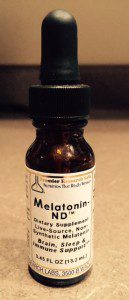 Melatonin is a hormone produced by the pineal gland in the brain. Its production is stimulated by darkness. Melatonin is what produces feelings of sleepiness. When the body is not producing melatonin, people often feel wide awake, or have difficulty falling asleep. The type of light emitted from smartphones, tablets, and laptops can interfere with normal melatonin production, when they are used late in the evening and before bed.
Melatonin is a hormone produced by the pineal gland in the brain. Its production is stimulated by darkness. Melatonin is what produces feelings of sleepiness. When the body is not producing melatonin, people often feel wide awake, or have difficulty falling asleep. The type of light emitted from smartphones, tablets, and laptops can interfere with normal melatonin production, when they are used late in the evening and before bed.
Melatonin can help people get back into a healthy circadian rhythm and fall asleep faster. As people start sleeping better, their own melatonin production will eventually take over. Dosages typically range from 1-3 mg. People with sleep disturbances following concussions may need higher doses, in the range of 3-6 mg. I prefer the liquid sublingual melatonin made by Premier Research Labs. The liquid allows for easy dose modification, and the bioavailability of Premier Research Labs is superior. A general recommendation would be to start with 2 mg/night, and slowly increase as needed up to 6mg/night. If staying asleep, rather than falling asleep is the issue, melatonin may not be needed (see below).
If chronic stress pervades your life, it’s possible high nighttime cortisol levels are also keeping you up. In healthy people, cortisol is highest upon waking, then gradually decreases throughout the day. If cortisol rhythms are abnormal, and levels are high at night, it can affect sleep. One fabulous herb that helps lower cortisol is Holy Basil. Taking Holy Basil both in the late afternoon, and again in the evening 1-2 hours before bed can encourage normal cortisol circadian rhythms. Holy Basil helps calm the body and mind. Phosphorylated Serine is a fatty acid found in all cells of the body. As a dietary supplement, it also helps to lower cortisol levels; 500-1000mg can be taken before bed.
One of the functions of cortisol is to regulate blood sugar levels in-between meals. If the adrenal glands are taxed, and cortisol levels are out of balance, going to bed 4-5 hours after eating may be problematic. Tanking blood sugar levels in the middle of the night are one of the reasons people wake up. To avoid this from being a possible factor in your ability to count one million sheep each night, don’t skip meals. Eat every 3-4 hours during the day, and have dinner or a snack at least 2-3 hours before falling asleep.
Magnesium
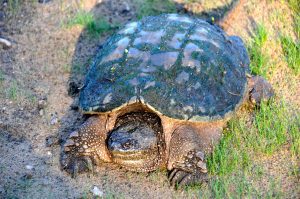 Minerals have been used in Chinese medicine for thousands of years as agents to calm the mind and promote restful sleep. Once upon a time, a famous Chinese herbalist Yu Jiayan, was visiting a fish market. He noticed that all the fish in one particular pond were very calm. Upon inquiry, he was told that the presence of turtles in the pond, and specifically the shells of the turtles, had a calming effect on the fish. The herbalist then went on to create many famous herbal formulas with tortoise shell (Gui Ban), used for calming the mind and improving sleep. It turns out turtle shells contain calcium, magnesium, phosphorus, and trace minerals such as zinc.
Minerals have been used in Chinese medicine for thousands of years as agents to calm the mind and promote restful sleep. Once upon a time, a famous Chinese herbalist Yu Jiayan, was visiting a fish market. He noticed that all the fish in one particular pond were very calm. Upon inquiry, he was told that the presence of turtles in the pond, and specifically the shells of the turtles, had a calming effect on the fish. The herbalist then went on to create many famous herbal formulas with tortoise shell (Gui Ban), used for calming the mind and improving sleep. It turns out turtle shells contain calcium, magnesium, phosphorus, and trace minerals such as zinc.
With today’s standard diet, many people are getting adequate amounts of calcium, yet are sorely deficient in magnesium. Magnesium exerts its sedative effects utilizing the same pathways benzodiazepines use to boost GABA in the brain5. Anxiety, restless sleep, restless leg syndrome, muscle spasms, twitching eyelids, and strong chocolate cravings are all indications that someone may be deficient in magnesium. I have had great results in improving sleep quality and decreasing restlessness with my patients by simply taking them off their “Calcium” supplement, and replacing with 250-300mg of magnesium glycinate before bed. When taking a mineral supplement, such as magnesium, it is important to use a form that is readily absorbed by the body. Magnesium glycinate and magnesium lactate are two forms that are easily digested and utilized (avoid magnesium oxide and magnesium carbonate). Too much magnesium can cause loose stools or diarrhea, so start with 250mg – 300mg before bed, and decrease the dosage if needed to avoid disaster pants.
Chinese Herbal Medicine
Suan Zao Ren Tang is a Chinese formula that is helpful when insomnia is combined with symptoms such as anxiety, nervous exhaustion, heart palpitations, dizziness, night sweats, irritability, vivid dreams or nightmares, and a red tip of the tongue that may extend around to the side edges. The beauty of Chinese herbs is that a formula can be custom made based on each person’s unique presentation of symptoms. I have had good results for restless sleep with a formula by Premier Research Labs containing the Chinese herb Schisandra (Suan Zao Ren) called Tranquinol. This formula helps to naturally balance neurotransmitters, and is useful when sleep has been negatively affected by prescription medications. It contains magnesium, Valerian and L-theanine which all help to naturally promote healthy levels of GABA.
Another reason to visit a Chinese Medicine practitioner is for acupuncture. Acupuncture has been shown in multiple studies and systematic reviews to be helpful for insomnia6,7. Acupuncture should also be considered as part the overall plan for recovering from brain injuries. It improves cerebral blood flow8,9,10, enhances functional connectivity in the brain11,12, and decreases sympathetic nervous system activity13. Over-activity of the sympathetic nervous system following traumatic brain injury has been well documented while at rest, and during exercise14. This effect can also contribute to sleep disruption. Click here to learn more about natural remedies for treating concussions.
There are many supplements on the market, and others I could readily discuss, but the suggestions described above are the ones I’ve had great results with across the board that work to address underlying problems of hormonal and neurotransmitter imbalances, and not simply provide a band-aid.
Adding Insult to Injury: If you struggle with poor sleep, you need to address the problem from as many angles as possible. Following these guidelines will ensure your are not adding insult to injury:
- Avoid caffeine containing foods and beverages after 12pm, such as coffee, tea, soda, and energy drinks.
- Avoid eating chocolate in the evenings (chocolate contains caffeine and theobromine, which enhances the stimulating effects of caffeine).
- Avoid overindulging in alcohol and sugar late at night. Alcohol gets converted into sugar by the liver. Consuming sugar before bed can lead to erratic blood sugar levels that impact healthy sleep.
- Workout in the morning or afternoon, rather than late evening.
- Do your best to go to bed at the same time every night, at the very least, lay in bed and read a book.
- Don’t quit your day job. Working the night shift has been shown to be detrimental to health, and hormonal balance. People who work night shifts have shorter life spans.
The quick take home message:
- Avoid caffeine, alcohol and sugar late at night.
- Prescription sleep medications come with unwanted side effects, can cause dependence, and some may increase the risk for neurodegenerative diseases later in life, such as Alzheimer’s
- Get blackout curtains, white noise machines, and blue-light screen protectors for your phone
- If you can’t fall asleep: try melatonin and holy basil
- If you can’t stay asleep: try magnesium glycinate and Tranquinol
- Try acupuncture (tryacupuncture.org)
- If you are in the Dallas-Forth Worth area, come visit me for acupuncture, nutritional therapy, craniosacral therapy, and Chinese herbal medicine support. Phone consultations for concussion recovery strategies are also available, 214-617-2595.
References
- Nedergaard, M. (2013). Neuroscience. Garbage truck of the brain. Science, 340(6140), 1529-1530. doi:
- Barker, M., Greenwood, K., Jackson, M., & Crowe, S. (2004). Cognitive effects of long-term benzodiazepine use. CNS Drugs, 18(1), 37-48.
- Billioti de Gage, S., Moride, Y., Ducruet, T., Kurth, T., Verdoux, H., Tournier, M., . . . Begaud, B. (2014). Benzodiazepine use and risk of Alzheimer’s disease: case-control study. BMJ, 349, g5205. doi: 10.1136/bmj.g5205
- Wood, B., Rea, M., Plitnick, B., Figueiro, M. (2012). Light level and duration of exposure determine the impact of self-luminous tablets on melatonin suppression. Applied Ergonomics. http://dx.doi.org/10.1016/j.apergo.2012.07.008.
- Poleszak, E. (2008). Benzodiazepine/GABAA receptors are involved in magnesium-induced anxiolytic-like behavior in mice. Pharmacological Reports, 60, 483-489.
- 11. Lee, C., Crawford, C., Wallerstedt, D., York, A., Duncan, A., Smith, J., . . . Jonas, W. (2012). The effectiveness of acupuncture research across components of the trauma spectrum response (tsr): a systematic review of reviews. Systematic Reviews, 1(46). doi: 10.1186/2046-4053-1-46
- Gao, L., Zhang, M., Gong, H., Bai, L., Dai, X. J., Min, Y., & Zhou, F. (2014). Differential activation patterns of FMRI in sleep-deprived brain: restoring effects of acupuncture. Evid Based Complement Alternat Med, 2014, 465760. doi:
- An, Y. S., Moon, S. K., Min, I. K., & Kim, D. Y. (2009). Changes in Regional Cerebral Blood Flow and Glucose Metabolism Following Electroacupuncture at LI 4 and LI 11 in Normal Volunteers. Journal of Alternative and Complementary Medicine, 15(10), 1075-1081. doi: 10.1089/acm.2009.0257
- Lo, M. Y., Lin, J. G., Ong, M. W., & Sun, W. Z. (2013). Cerebral hemodynamic responses to acupuncture in migraine patients: A systematic review. Journal of Traditional and Complementary Medicine, 3(4), 213-220. doi: 10.4103/22254110.119720
- Yin, L., Jin, X., Qiao, W., Sun, J., Shi, X., Tian, J., . . . Zhu, K. (2003). PET imaging of brain function while puncturing the acupoint ST36. Chinese Medicine Journal, 116(12), 1836-1839. doi: 10.1155/2014/465760
- Biella, G., Luisa, M., Pellegata, G., Paulesu, E., Castiglioni, I., & Fazio, F. (2001). Acupuncture produces central activations in pain regions. NeuroImage, 14, 60-66. doi: 10.1006/nimg.2001.0798
- Dhond, R., Yeh, C., Park, K., Kettner, N., & Napadow, V. (2008). Acupuncture modulates resting state connectivity in default and sensorimotor networks. Pain, 136(3), 407-418.
- Li, J., Li, J., Chen, Z., Liang, F., WU, S., & Wang, H. (2012). The influence of PC6 on cardiovascular disorders: A review of central neural mechanisms. Acupunct Med, 30(1), 47-50.
- Leddy, J., Kozlowski, K., Fung, M., Pendergast, D., and Willer, B. (2007). Regulatory and autoregulatory physiological dysfunction as a primary characteristic of post concussion syndrome: Implications for treatment. NeuroRehabilitation, 22, 199-205.

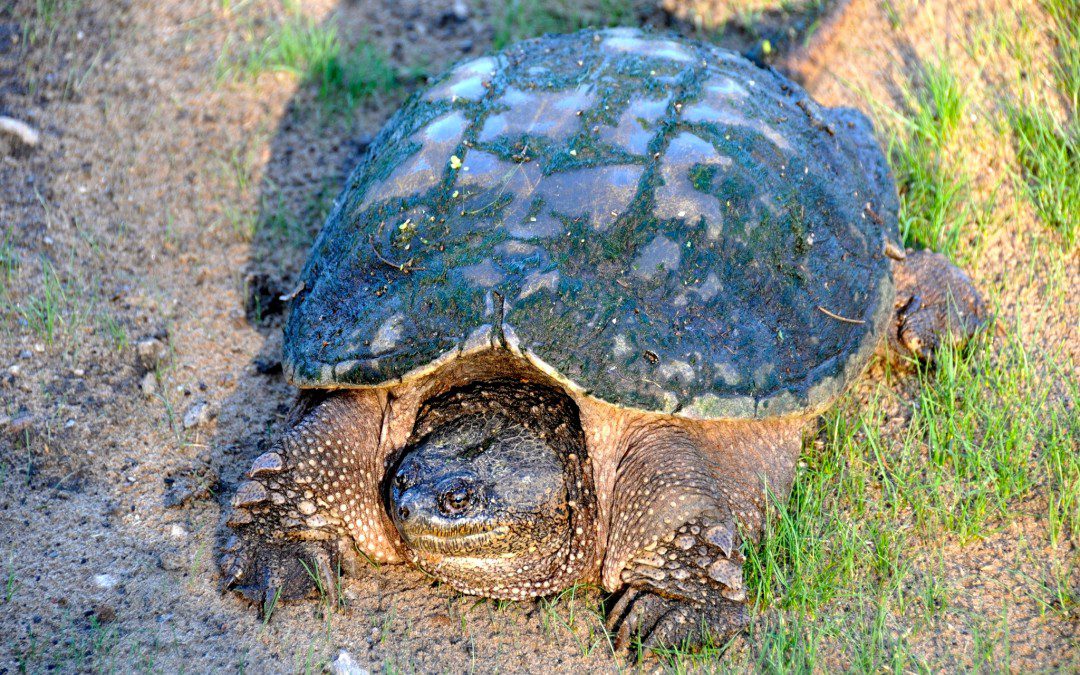
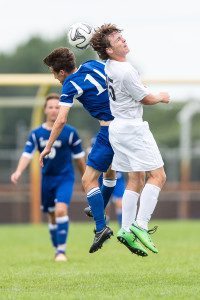

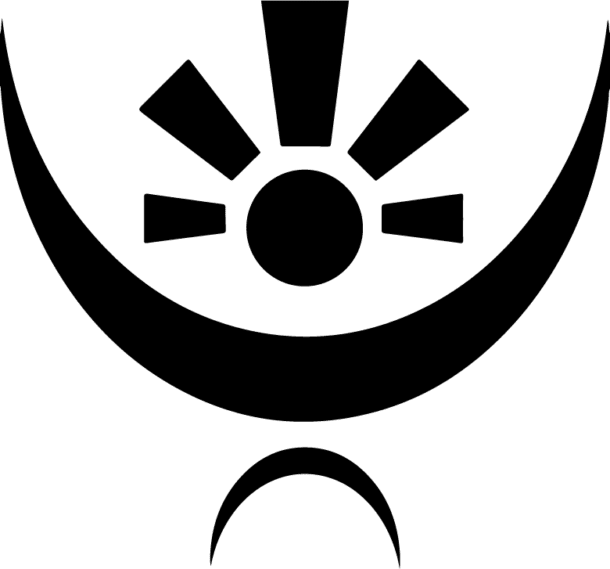
Wonderful !!!!!!!!